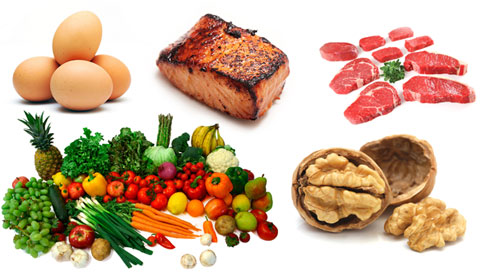No. of views : (25612)
Paleo Diet - food items for taking and avoiding
Posted on: 04/Apr/2017 2:37:04 PM

Paleo diet is on the basis of food items that have been taken right from the very early period of stone age. The fact is that the term Paleo is derived from the word Paleolithic which literally means - Second part of the Stone Age beginning about 750,000 to 500,000 years BC and lasting until the end of the last ice age about 8,500 years BC. That is why the name paleo is used.
Paleolithic diet consists of food items such as vegetables, fruits, nuts, roots, meat (liver and brain).
There are some food items which are not included in Palio Diet.
They are - milk and milk-related food items, grains, sugar, pulses, processed food items, salt, coffee, and alcoholic beverages.
It has been observed by some experts that Paleo Diet really improves the body health. However, it is still advisable to get the expert advice from the doctors before starting practicing Paleo Diet. It is worth taking a look at the list of items - what to take and what to avoid.
Benefits of Paleo Diet:
- This diet is pure. It avoids the synthetic man-made preservative and taste-inducers that are used in our normal diet.
- The habit of eating fresh vegetables and fruits strengthens the body resistance to diseases. With this diet, we have the benefit of taking the anti-inflammatory elements contained in plants.
- The habit of eating mutton and beef, known as red meat, accumulates large amounts of iron in the body.
- As items with rich protein and fat content are taken, the feeling of contentment of eating can be experienced.
- As the variety and quantity of food items remain less, it will prevent an increase in body weight.
- Paleo Diet system induces the generation of more insulin and prevents diabetes. Further, it checks the extent of diabetes in diabetic patients who follow Paleo Diet.
- The prospects of being affected by cancer or diabetes or heart-related diseases are very considerably less for the persons who practice Paleo Diet.
Food items in Paleo Diet:
- Vegetables such as Carrot, greens, broccoli, cabbage, cauliflower, brinjal, raw onion, and capsicum
- Fruits such as apple, avocado. Papaya, peach, plums, mango, grapes, lemon, watermelon, figs, orange, bananas, pineapple, and guava.
- Eggs of hen and duck
- Almonds, pumpkin seeds, sunflower seeds, walnuts, and cashew nuts
- Nutritious oils such as olive oil, avocado oil, coconut oil and flax seed oil.
- The meat of herbivorous animals and birds (Chicken, turkey, pork, shrimp, rabbit, mutton, emu, ducks, and quails
- Seafood items such as mathi fish, vaalai fish, lobsters/crabs, prawn, etc.
Food items to be avoided in Paleo Diet:
- Milk-related items such as cheese, curd, butter, ice cream, and sweets
- Juices of fruits - apple, orange, and mango
- Bread, oats, grains, wheat, and corn
- Soya beans, peas, and groundnuts
- Natural sweeteners
- Salty items
- Snack items such as chips and biscuits
- Nutrition drinks
- Alcoholic beverages
- Sweets like lollipops, peppermints, etc.
Paleo Diet and body weight reduction:
- Take protein and fat rich food items every time.
- Do not reduce the quantity of food taken in order to reduce the calorie intake.
- Ensure to take one plant item every time - this is ideal. Take plenty of fresh vegetables and fruits.
- Avoid starving without food intake. Please be aware that it is quite possible to reduce body weight without starving.
- For increasing the quantum of physical stretching, select one of the exercises such as walking, jogging, aerobics, etc and ensure to do this every day without fail.
- While taking more quantity of meat and vegetables, reduce the intake of dry fruits, nuts, fruit juices, etc.
Menu of typical Paleo Diet:
Breakfast: Bananas and pancakes or eggs
Lunch: Chicken soup, pork soup or beef soup. Fried vegetables or meat.
Evening tea-time snacks: salads and a small cup of cut fruits.
Dinner: Stuffed capsicum or chicken fingers
For more inquiries please contact:








